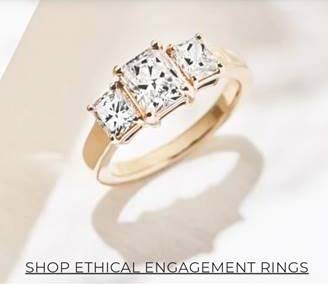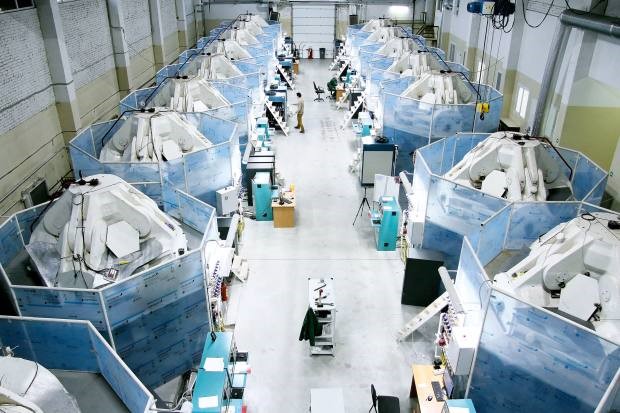Lab-Grown diamonds are taking off
More diamonds are being grown in labs. More stores are carrying them. More consumers are choosing them.
That misunderstood word "synthetic" is being replaced by the more descriptive "lab-grown." These gems are promoted as clean, conscious, conflict-free, ethical, cool & cultured, eco-friendly, and responsibly affordable.
The market is shifting, and so are valuations. Here's a look at what's going on.
Who grows diamonds?
- There are dozens of diamond-growing labs worldwide, and diamond distribution is worldwide.
- Reputable producers advertise, have websites, and enthusiastically promote their name and their product, often inscribing their gems with the company name. Other gem growers find it to their advantage to remain under the radar.
- Quality varies. Some producers supply grading reports with their stones, others do not.
- China is the main producer of lab-grown diamonds, with India close behind.
- Grading labs report receiving parcels of mined diamonds with undisclosed lab-made diamonds mixed in.
- Lab-made diamonds have lower valuations than mined diamonds—but by how much? See below.
The Lightbox effect
- A few years ago, a 1-carat lab-grown diamond might sell for about $4200 (compared to a mined diamond of similar quality, selling for about $6000).
- Last year De Beers, through its new Lightbox brand, began selling gem-quality diamond jewelry for $800 per carat. This price severely undercut other producers.
- One effect is that many other gem-growers and retailers have lowered their prices to compete.
- Another effect is that mined diamonds are also moving down in value.
- A former employee of De Beers predicts the company might reduce prices even further once its new factory is built, which would further affect the market in general.
- The low price conveys De Beers' message that lab-grown diamonds are cheaper, and therefore lesser, than mined diamonds; that they are suitable only for fun events like birthdays and graduations. A serious commitment like an engagement merits a mined diamond—which is De Beers main source of profit.
Who's buying lab-made diamonds?
- Millennials are said to be driving the market, perceiving lab-grown diamonds to be conflict-free and more eco-friendly. They may also be attracted to the modernity of the laboratory process, rather than put off by it.
- A poll of female millennials found that 53 percent would happily accept a lab-grown diamond engagement ring.
- The industry reports that demand for larger stones, typically used as center stones for engagement rings, has outstripped supply. One important reason: you can get a bigger lab-made diamond than a mined diamond of the same price.
Where are lab-grown diamonds sold?
- An increasing number of retailers who used to shun lab-made stones as a fad, or because they didn't think consumers would understand the difference, are now selling both mined and lab-grown gems.
- Lab-grown gems offer retailers a higher profit margin than mined gems.
- Last year J.C. Penny and Macy's debuted bridal collections of lab-grown diamond jewelry.
- Online retailers abound.
What to watch for
- A "brand name" is not in itself a sign of quality. As with all commodities, some brands are better than others.
- Not all grown diamonds are the same, and not all are of high quality.
- A large quantity of lab-made diamond is melee—very small diamonds. A piece of jewelry may have a mined diamond as the center stone surrounded by lab-grown melee. Often the melee is not graded or described on the appraisal (though it should be).
- Some growers—such as Lightbox—do not supply lab reports with their stones. Man-made diamonds, like mined diamonds, should have a grading report from a reliable independent lab.
- Lab-made diamond of poor quality can be treated to mimic higher quality mined diamond.
- Recognizing lab-made stones can be difficult. The average appraiser or jeweler does not have the technology required to distinguish mined from lab-made stones.
- These labs supply reliable reports on lab-grown diamonds.
GIA Report Check
AGS Report Verification
GCAL Certificate Search
Values are fluctuating!
As more gem-growers enter the market, manufacturing processes are refined, and volumes increase. Consumers become more familiar with lab-made stones and attitudes shift. Throughout all this, both mined and lab-made diamonds are adjusting to the new marketing environment.
Our advice for insurers:
Gather as much descriptive information about the diamond as possible. The 4 Cs (cut, color, clarity, and carat weight) are necessary for lab-made as well as mined diamonds.
Be sure to get a reliable lab report that states whether the diamond is mined (often described as "natural") or lab-made, and whether it has any enhancements.
Keep valuations updated. This goes for policies already in place as well as for new coverage. Remember that settlement is based on valuation at time of loss—and a future valuation could be quite different from valuation at time of purchase.
FOR AGENTS & UNDERWRITERS
An appraisal should state that the diamond is either mined (natural) or lab-made (synthetic, lab-grown, man-made, cultured, created).
Gems are lab-grown through either of two methods, CVD (chemical vapor deposition) or HPHT (high pressure high temperature), so these terms may appear on an appraisal or lab report. (Note, however, that HPHT is also a method of treatment for gems.)
The best appraisal includes the JISO 78/79 appraisal form and is written by a qualified gemologist (GG, FGA+, or equivalent), preferably one who has additional insurance appraisal training. One course offering such additional training is the Certified Insurance Appraiser™ (CIA) course of the Jewelry Insurance Appraisal Institute.
A high value diamond should have a grading report from a reliable lab. The report should also state whether the gem is mined (also called "natural") or lab-made. We recommend the following labs, and you can use this links to verify reports you receive.
GIA Report Check
AGS Report Verification
GCAL Certificate Search
Note that grading labs may offer several reports, with higher-priced reports giving more information. (See GIA's reports on lab-grown diamonds.) Be sure the report you get has all the necessary information.
FOR ADJUSTERS
If the appraisal does not explicitly state a gem is mined, use every means possible to determine whether it is mined or lab-grown.
A few years ago lab-made diamonds were generally 20-30% below mined diamonds in valuation. In early 2019, one estimate was 50-60% below—and likely to continue dropping.
Base the settlement on descriptive information from the appraisal and a reliable valuation at time of loss.
In the event of a partial loss, especially a damaged or chipped stone, get a GIA damage report prior to replacing.
Jewelry with multiple gems may have mined and lab-grown stones mixed together.
Be especially diligent with colored diamonds, which are extremely expensive for mined diamond but easily produced in the lab. Lightbox, for example, sells its pink and blue diamonds at the same price as its colorless stones.
Some lab-grown diamonds are inscribed with the name of the manufacturer, though some are not. And inscriptions on the gem's girdle can be removed. Deliberate non-disclosure is always possible.
Gem-grading labs have received parcels with lab-grown diamonds mixed in with mined gems. How many lab-made stones have not been "caught" and are out in the marketplace being sold, and priced, as mined diamonds? The potential for overpayment on claims is enormous.
Be alert for fraud. Disclosure information can get "lost." A customer may buy jewelry with lab-made diamonds, not understanding the meaning of a term like cultured, for example, or not appreciating the large difference in value between mined and grown diamond. When he becomes aware that he made a bad purchase, he may "sell" it to the insurance company through a fraudulent claim.
©2000-2025, JCRS Inland Marine Solutions, Inc. All Rights Reserved. www.jcrs.com





